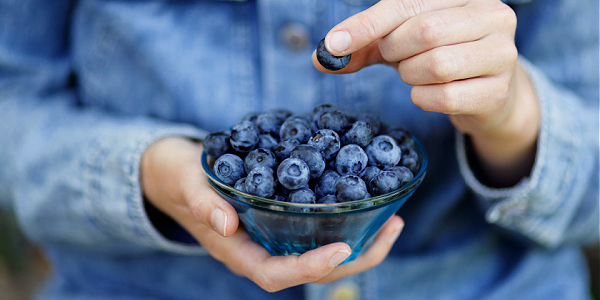
Navigating the busy world of nutrition labels can feel like decoding a complex puzzle. Between the myriad of numbers, confusing terms, and tiny print, it's easy to feel lost in a sea of information.
But what if you could turn this confusion into clarity and confidence in your food choices? Mastering the art of reading nutrition labels isn't just helpful—it's a game changer! With this skill, you're not just glancing at numbers; you're gaining a powerful tool to take control of your health and diet.
Ready to transform the way you see food? Let's dive in and unlock the secrets of how to read food labels together!
Understanding Nutrition Facts
The nutrition facts label is more than just a black-and-white box on the back of your packages. It’s a piece of information that offers important clues about how nutrient-rich your food or beverage is.
Becoming label-literate can help make you healthier in both the short run (as you make decisions throughout the day) and in the long run (as you strive to make healthy choices throughout your lifetime).
Search for the Serving Size First
Don’t know where to start? Determining the serving size is a great place to begin!
The number of servings per container is listed under “Nutrition Facts.” This number can be meaningful if you’re wondering how many packages of a food it might take to feed your family. For example, a pasta box with 8 servings per container will likely supply enough pasta for a family of four for two meals. The number of servings can be valuable for meal planning and budgeting purposes.
The serving size is listed below the number of servings per container. According to the Food and Drug Administration (FDA), the most recent round of label changes ensure serving size is now listed in bolder, larger type. Helping this information stand out makes sense because all the other values listed on the label are based on one serving of food.
Serving sizes are also based on the amount customarily eaten, not the amount you should eat. In other words, it’s okay to eat more or less than the listed serving size to meet your daily needs, but the listed amount is a good reference point.
Check Out the Calories Next
Next, the number of calories can give you another clue about how nutritious a food is. Due to recent label changes, this number is also listed in a larger type, meaning it won’t be too hard to spot.
The number of calories that is “healthy” for you to consume depends on the type of food you’re eating and your health goals. For example, 200 calories per serving may make sense for a meal component like meat but may be at the upper limit of what you want to consume for a snack or dessert. If you don’t know what amount of calories you should be getting, you can use the Mayo Clinic Calorie Calculator to give you an idea.
Speaking of calories, it’s important to understand that much of the nutrient information on the label (like % Daily Values) is based on a 2,000-calorie per day diet. Not everyone needs 2,000 calories a day, but like the serving size information, this gives you a good average to aim for. If you’re eating a higher or lower amount of calories than this per day, or wondering how much to feed your children, you can work with a dietitian to better understand how much a certain food is helping you to meet daily nutrient needs.
For reference, a food is considered “low calorie” at 40 calories or less per serving. A calorie-free food can technically contain less than 5 calories per serving.
Identifying Dietary Needs and Allergens
Following serving size and calories, there is a list of nutrients. This is often where people get caught up, but with a few tips, you can locate just what you need in no time.
Pinpoint Percent Daily Value
Before delving into specific nutrients and how to find them, understanding the percent daily value (% DV) is crucial. As the name suggests, the % DV is a reference amount that indicates how much of your daily requirement for a nutrient your food meets. For example, a glass of milk will likely meet around 30% of your recommended dietary intake (RDI), so your milk carton may read “30%” next to Calcium in the % DV column.
As mentioned above, % DV is based on a 2,000-calorie diet. Also, not all foods have a % DV, which happens for various reasons. For example, protein doesn’t usually have a % DV next, in part because protein needs are highly variable. Another example is trans fats, although they don’t have a % DV next to them because there’s no “healthy” amount of consumption to aim for (it’s better to avoid them altogether).
If you’re aiming for a certain amount of a nutrient, remember that 5% or less of the DV is considered “low,” while 20% DV or more of a nutrient per serving is “high.” You'll mostly want to seek foods higher in nutrients like fiber and iron and lower in saturated fats, sodium, and added sugars.
Check Out Macronutrient Counts
When looking into nutrients, you’ll see macronutrients (fat, protein, and carbohydrates) listed before micronutrients (vitamins and minerals). The macronutrients are generally bolded, and related nutrients within these categories are listed below them and indented (a little off the side). For example, under “Total Fat,” you’ll likely see grams of “Saturated Fat,” which can tell you how much of the total fat content is made up of saturated fats.
Total carbohydrates (carbs) often follow a similar format, but you’ll see “Dietary Fiber” and “Total Sugars” listed beneath, along with the amount of added sugars included. Protein is typically listed at the bottom of this section
Along with the macronutrients in this section, you’ll see some other nutrients of interest, like cholesterol and sodium. The % DV you aim for regarding these nutrients may depend on your health goals and needs. In general, you’ll want to aim for a lower % DV.
Zoom In on Micronutrients
You'll see vitamins and minerals reading further down on the list of nutritional values. This section is usually at the bottom of the panel, separated from the macronutrients section by a thick, black bar.
It’s helpful to know that not all micronutrients will be declared in this section. In other words, you won’t see all the possible vitamins from A-K or every mineral. The nutrients that must be listed in this section are periodically updated, and some additional nutrients can be listed by companies voluntarily. Currently, vitamin D, calcium, potassium, and iron, are required on the label and are accompanied by their %DV. Vitamins A and C are listed voluntarily so you may see them towards the bottom of the label.
Depending on your health goals, this section may be of particular importance to you. For example, if you desire to improve bone health, you may want to seek out products with impressive levels of calcium and vitamin D. If you’re keen on increasing your body’s immune defenses, you may be interested in products with vitamin C listed.
Avoiding Allergens
Beyond nutrients, you’ll find other information on a food label that can help you make healthful decisions. One key piece of information that food manufacturers are required by law to list on food and beverage containers is ingredients with allergens.
Allergens are identified in a few ways, so it’s crucial to look closely at the label and read through all the ingredients. For example, milk might be recognized as an allergen in one of the following ways:
1. In the name of an ingredient: Such as “buttermilk,” where the common name of the ingredient identifies the allergen (may be bolded in the ingredients list)
2. In parentheses: Typically following an ingredient when it’s not listed using a common name, such as “whey (milk)
3. In a “Contains” list: Like “Contains: Milk” (when a contains statement is present, all of the major allergens in that product must be listed)
Remember that the “May Contain” statement is voluntary and is often listed when a chance of cross-contamination may occur. Also, allergen information listed typically addresses only the top 9 allergens, meaning it may not warn you about rarer food allergens (like bananas or sunflower seeds).
This may sound like an obvious advice, but it’s worth clarifying: You’ll want to choose foods without ingredients you’re allergic to for optimal health and food safety.
If you suspect food sensitivity, you can work closely with a dietitian to decide if it’s worth avoiding a specific allergen. They can also help ensure you’re getting enough nutrients while cutting out foods with specific allergens.
Analyzing the Ingredients List
Placed in proximity to a nutrition facts label containing calories and nutrients, you should see an ingredients list. It’s often below the nutrition facts but may be placed to the side.
How Ingredients Are Listed on Packaged Products
Ingredients are listed on a product label in descending order according to weight, with the highest ingredient listed first. The ingredients in the highest amount will be listed first on the ingredients list.
If you have food allergies or sensitivities, you’ll want to scan the entire list to be sure it doesn’t contain concerning ingredients. Otherwise, focusing on the ingredients that come first is recommended since they are in the highest amounts.
You may have questions about some ingredients you see on the ingredients list. Generally, your dietitian can answer these questions and decide whether an ingredient is right for you. The FDA also has a chart on common food ingredients and examples that can help you make sense of ingredient names.
“If you can’t pronounce it, put it back,” is a dangerous saying in the nutrition world regarding ingredient labels. While opting for products with a few simple ingredients you recognize can be a healthful choice, this isn’t always the case.
For example, vitamin C is sometimes listed as ascorbic acid on an ingredients list, and while not everyone can pronounce ascorbic acid, it’s an essential vitamin that everyone needs. In short, it’s beneficial to familiarize yourself with ingredients you eat regularly and any new ones you come across, so you can move forward feeling empowered to choose foods that align with your goals.
Clue In on Added Sugars
Regarding unfamiliar names, added sugar, in particular, is an ingredient that can lurk under some pretty sneaky names. Spy it using the following alter egos, to name a few:
• Cane juice
• Fruit nectar
• High fructose corn syrup
• Invert sugar
• Malt syrup
Tips for Fresh or Whole Foods
What about whole foods, such as apples or celery, that come without a nutrient facts label? This is common in the case of fruits and vegetables and is often a sign that there’s only one ingredient contained (the food you see in front of you).
Some larger companies provide nutrition facts online if you’re curious about a piece of produce and its nutritional value. For example, nutrition facts for Dole brand bananas can be found on their website. For farmer's markets or smaller vendors, you may need to ask the grower or manufacturer directly how their specific crop stands up to the average counterpart.
One quick way to assess a whole food’s nutritional value is to simply search it using FoodData Central, a database from the U.S. Department of Agriculture (USDA). Enter your food and search the variety (such as “apple honeycrisp”) to get a good estimation of nutrient content. Google’s search engine also pulls information from this database, so it’s relatively safe to rely on the answers you get from a google search (like “apples calories”) if you’re short on time.
Detecting Food Claims
Unfortunately, food labels aren’t created with the sole purpose of conveying nutrient information. They are also used as a marketing tool, and companies often highlight what they want to draw your attention to while minimizing points of concern.
When shopping for packaged food, remember that nutrition claims may be misleading. Knowing the facts on the nutrition label will allow you to compare front-of-box claims with nutrients and ingredients listed on the back of the box, which can reveal the truth about an item.
For example, foods that use the term “heart-healthy” may only have to meet fat, cholesterol, and sodium requirements. These products may still contain added sugars and may lack key nutrients like fiber, protein, vitamins, or minerals.
Another great example of this phenomenon is trans fat. Although it’s technically banned in foods in the United States, companies can still say “zero trans fat” if their product contains less than 0.5 grams per serving.
Essentially, even when a food seems healthy, says the words “healthy choice” on the label, or claims to be “low” in or “free” of certain components, it’s recommended to look closer at the nutrition label and ingredients list. As mentioned above, being label-literate can help you read between the lines.
The Final Verdict on How to Read Food Labels
At first glance, a nutrition label can seem intimidating. However, it’s packed with useful information to help you maximize your health journey.
Luckily, label-reading is a lifelong skill that can be developed and fine-tuned. A dietitian can assist your journey better to understanding confusing numbers, terms, or phrases.







